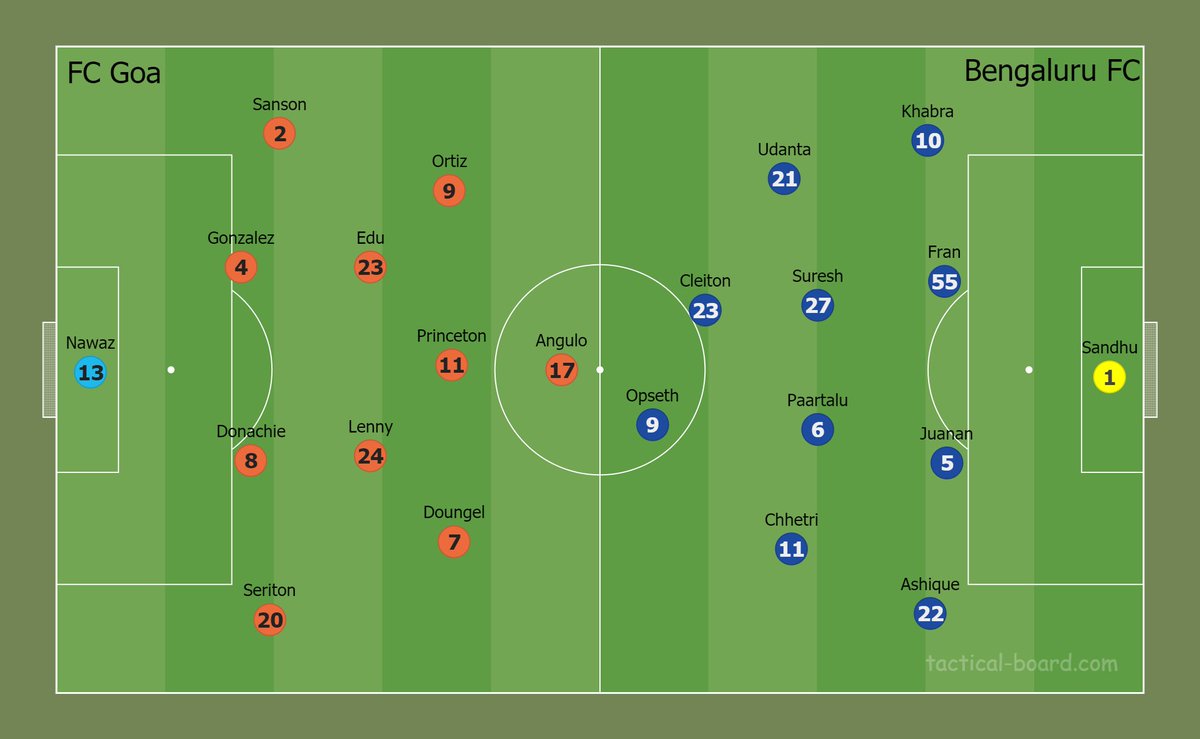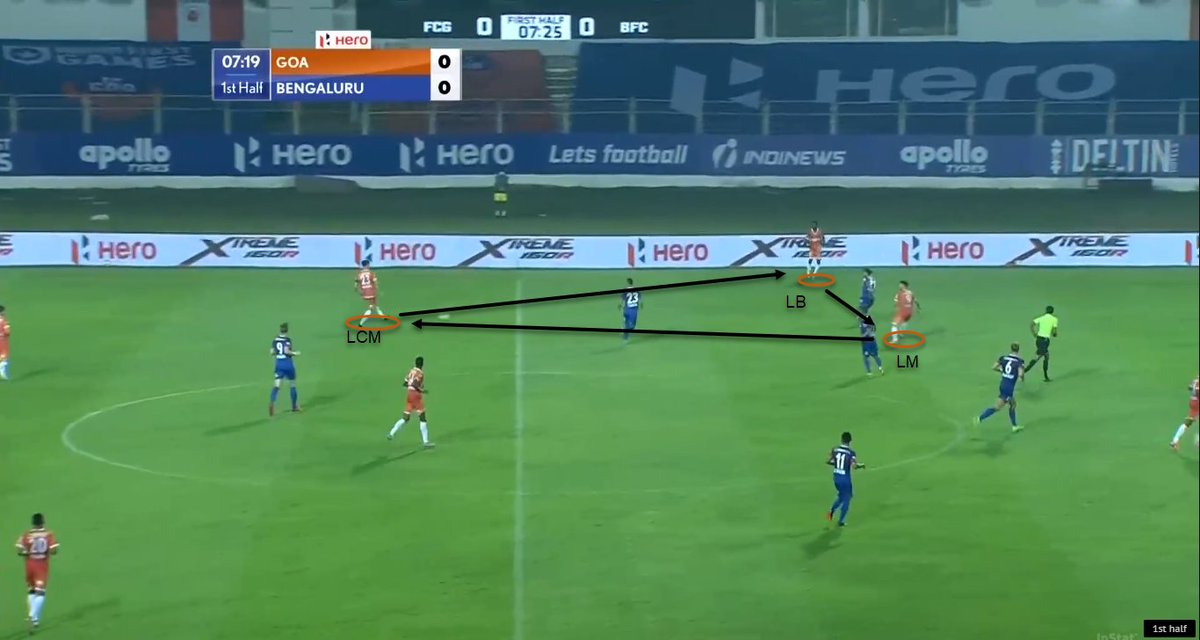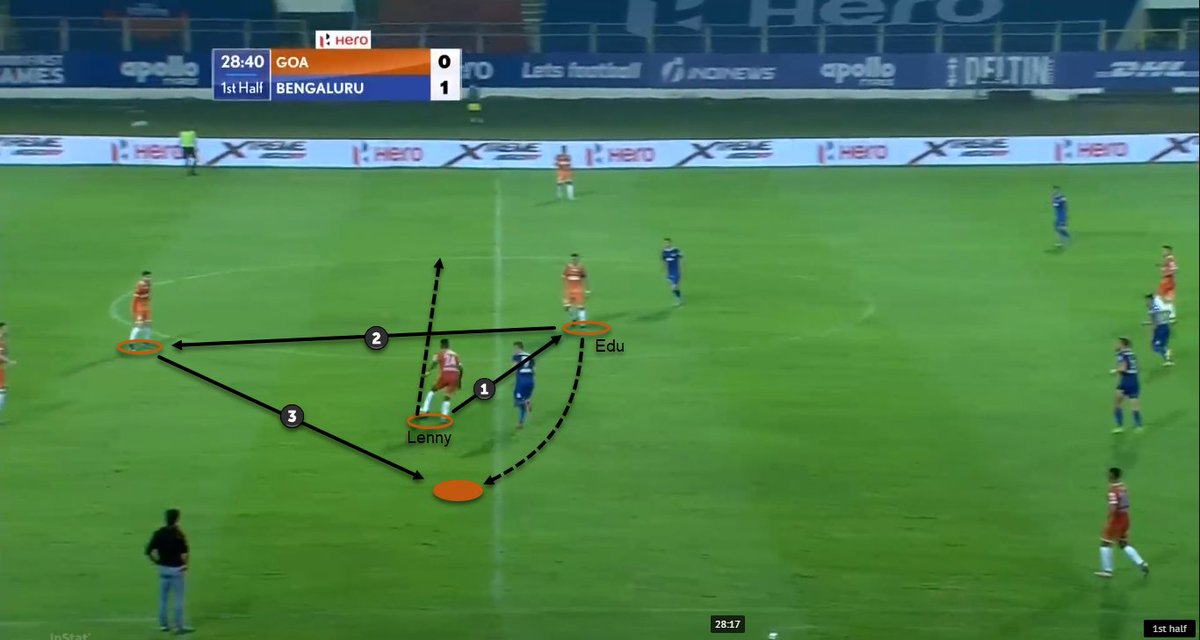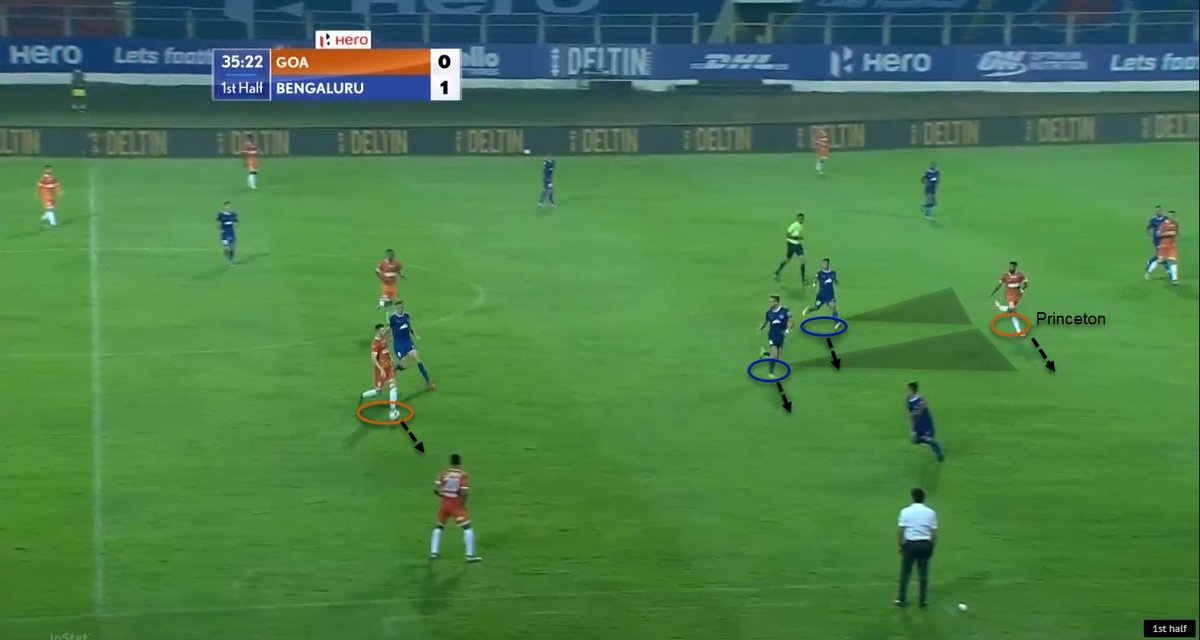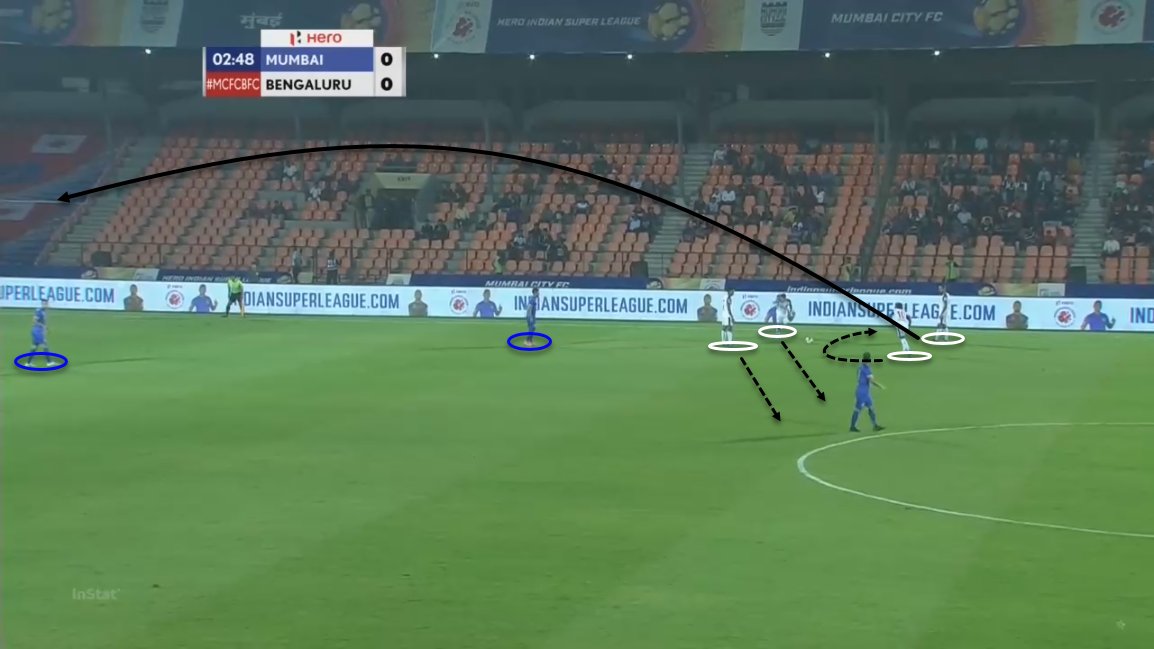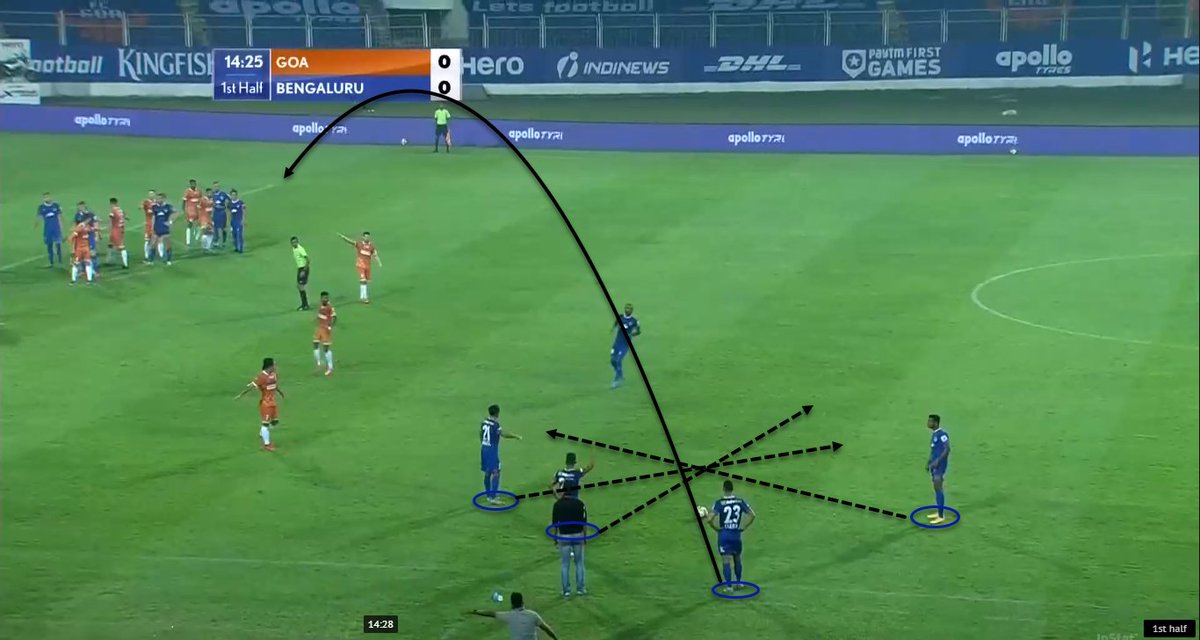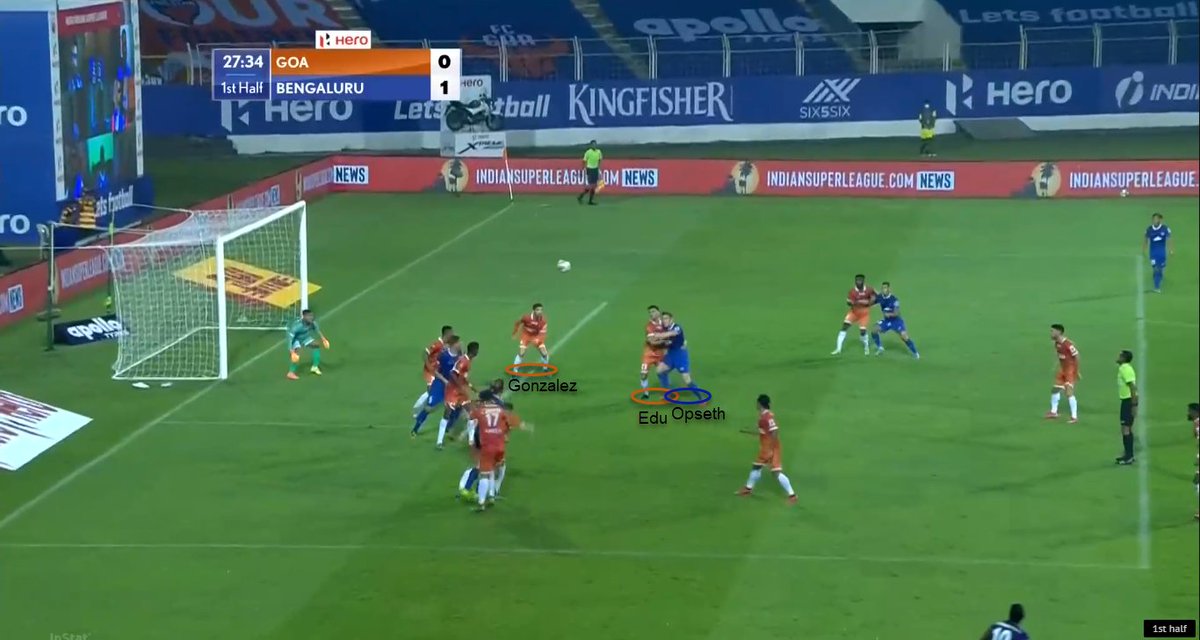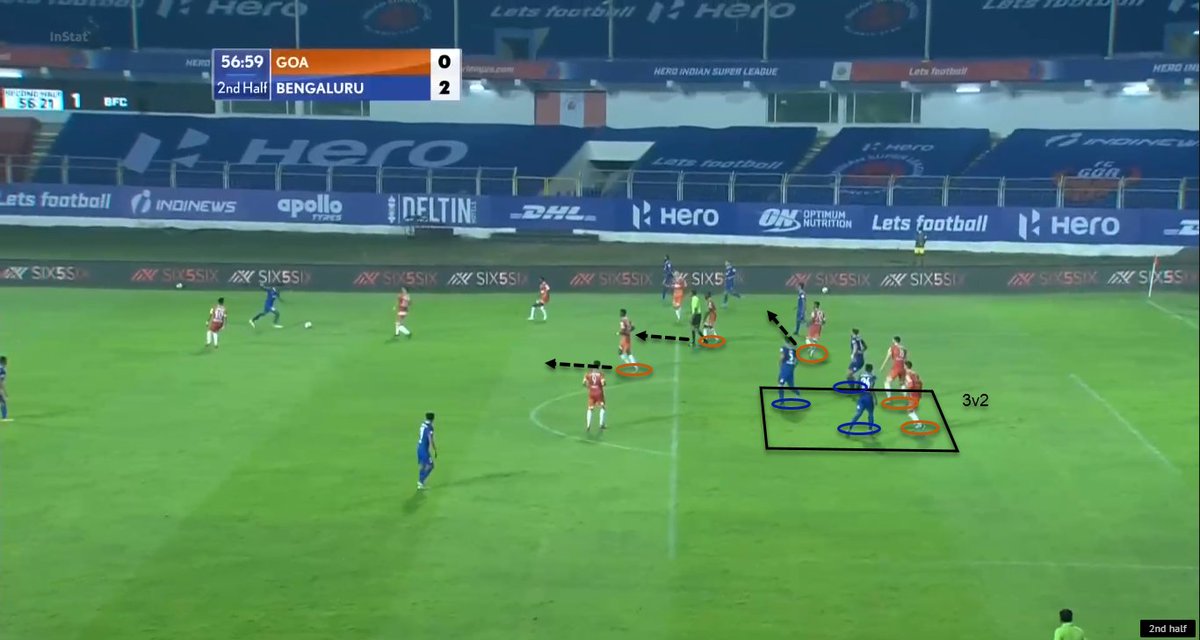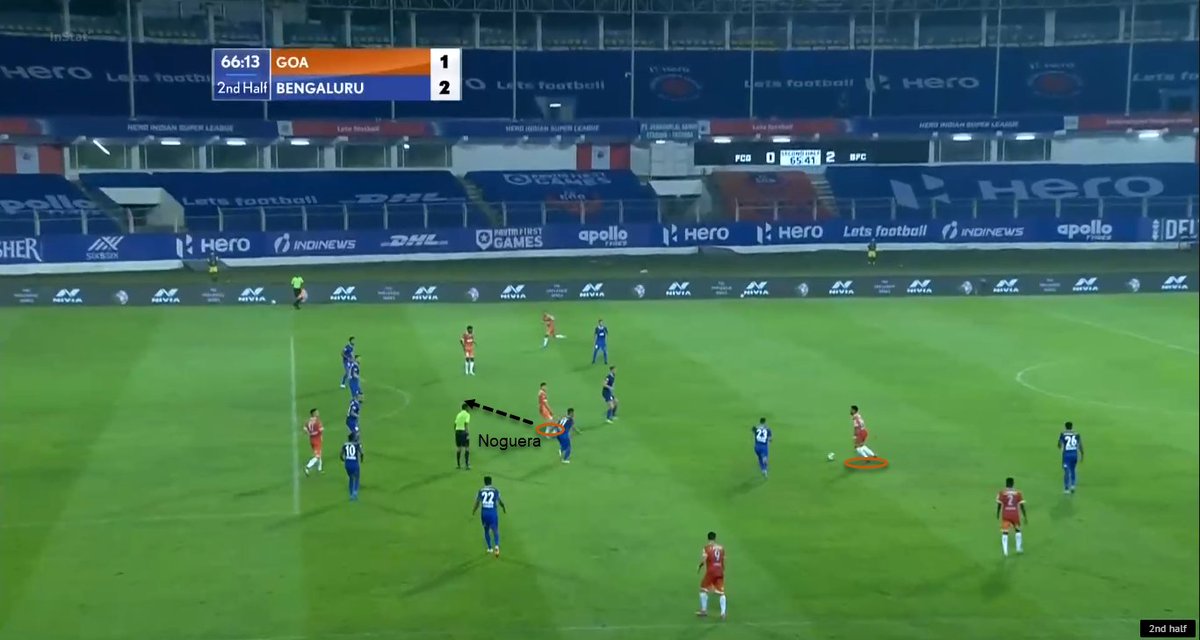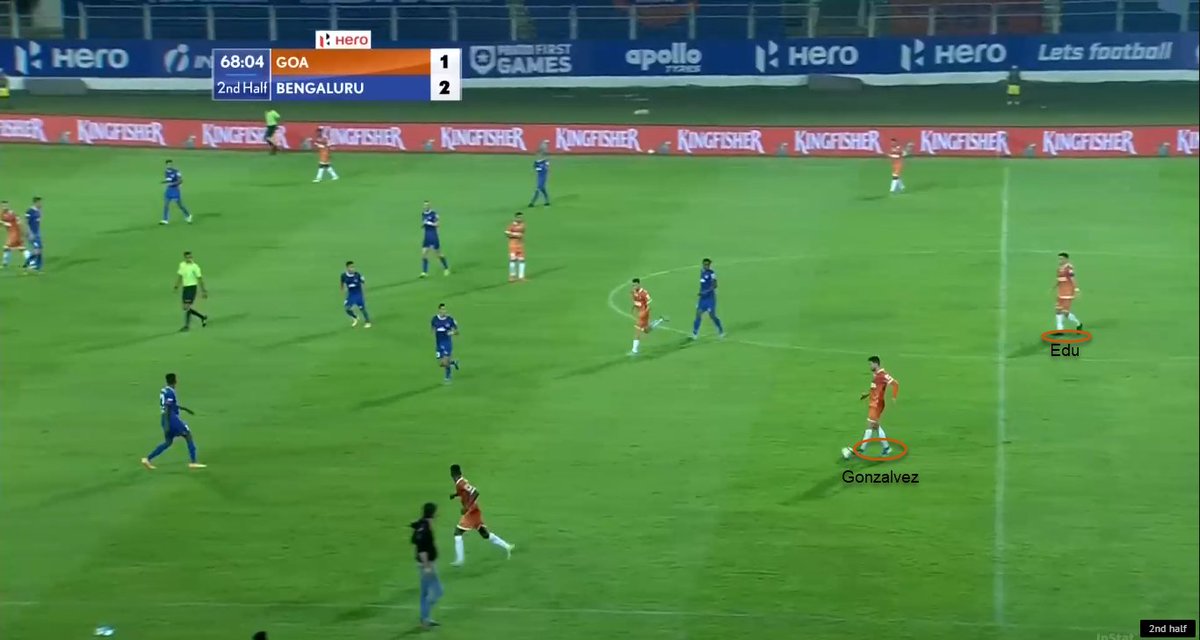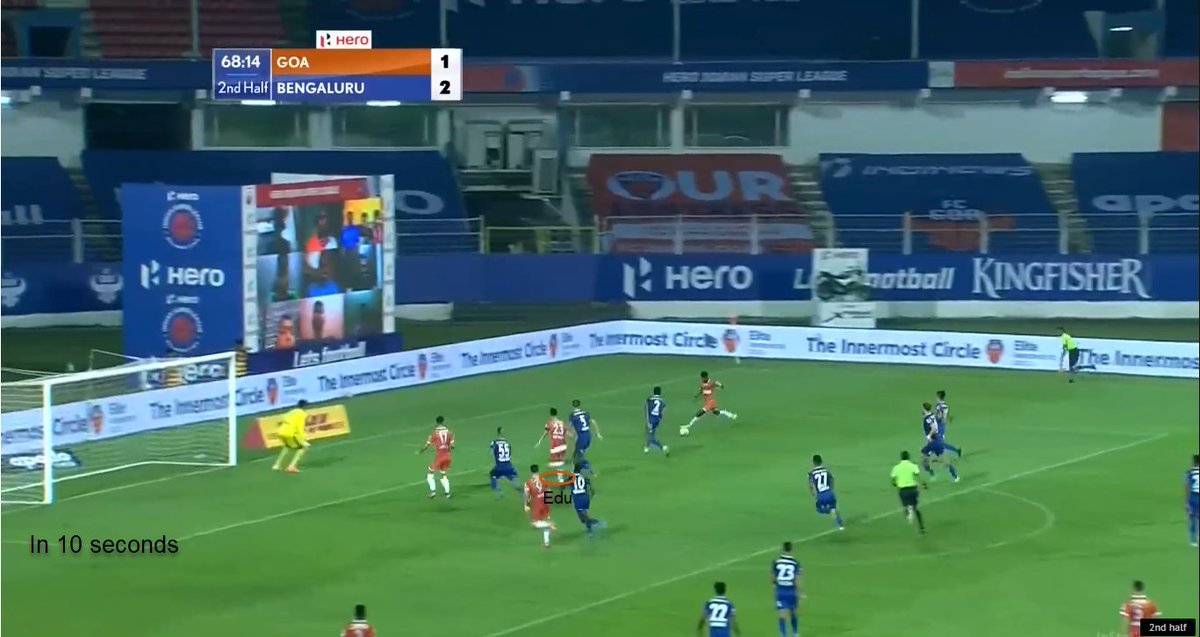Tactical analysis of yesterday& #39;s match @FCGoaOfficial vs @bengalurufc (2-2) in the @IndSuperLeague.
I will try to cover as many tactical points as possible. I have also tried making a few animations for the first time. Hope you guys like it.
I will try to cover as many tactical points as possible. I have also tried making a few animations for the first time. Hope you guys like it.
Goa lined up in a 4-2-3-1. Edu dropped in between the two centre-backs to increase the width and propagate ball progression. Lenny stayed in front of the three while the fullbacks pushed up. Princeton preferred staying between Bengaluru& #39;s midfield and defence line.
Angulo likes to play off the defender& #39;s shoulder but he offered great movement both in support and in making runs in behind. Doungel stayed wide on the right and displayed good energy especially off the ball(while pressing). Ortiz often moved into the half-space.
As a result, Senson had the room to surge forward and held the width of the team on the left. Because of this, there was a common rotation between the LCM, LB and LM. Something that FC Goa is quite used to since Lobera& #39;s time.
There were many other positional rotations observed throughout the time when Goa was in possession. Lenny and Edu kept switching places vertically and horizontally, sometimes with the help of passes and sometimes without.
Despite the constant movement and passing, Goa struggled to progress the ball into the final third. So why were Goa& #39;s rotations ineffective? The general idea to use them is to get rid of your players/man-marking. However, Bengaluru was least bothered about that.
They employed a position oriented zonal marking where their line of confrontation (a line from where they start applying pressure) was in the middle third. Therefore, they didn& #39;t engage with players above that irrespective of what they do.
Secondly, each player stepped out of their line to press only when the player in their positional zone had the ball. This also caused staggering which made ball progression more difficult for Goa. Here& #39;s a clip for better understanding.
Bengaluru have been very well organised under @CarlesCuadrat for this reason. Starting their press deep helps them in allowing minimal space behind the backline and between the lines for opposition to exploit. This zonal marking gives the flexibility to move from side to side.
Princeton played between the lines but was caught in the shadow of the pivots. That is because his movement was mirrored to that of the ball which made it easier for Bengaluru to track. Bengaluru& #39;s defensive system didn& #39;t mind offensive players like him dropping deep to help.
As space would still be intact and the threat would be considerably less from far out. Due to all these reasons, Bengaluru had a comfortable half despite having less possession. When the Blues were in possession, they moved to 3-2-5 asymmetrical.
Ashique and Udanta held the width of the team with Chhetri, Opseth and Cleiton converging closer to each other. Either Khabra stayed back to form back three or Paartalu dropped between the CBs and Khabra would push higher to match Suresh in the midfield.
Bengaluru played their route one football with Sandhu launching the majority of his kicks towards the right flank. They couldn& #39;t do much damage with this style of play as Goa matched their pace and combated with numerical superiority.
All the changes made by Ferrando after the half time paid off. He had to figure out how to break this zonal system. A staggered midfield can be exploited using angled passes (such as diagonal), which they did in the first goal. To break the zonal system one can either overload or
deploy wingers who can dribble across the pitch (Ortiz in the second goal). Ferrando had all the right tools at his disposal to execute these ideas. Noguera and Brandon were exceptionally good with their movement and playing angled passes. Seriton was also encouraged to move up.
They moved to 3-2-5 when they were in possession following a pattern of passing and exiting the space. Bengaluru& #39;s reserved approach didn& #39;t help their case either. And eventually gave in to the pressure to lose their lead.
Bengaluru have always been a set-piece threat under Cuadret. Goa didn& #39;t look prepared for the set-piece tactics that have already been used by Bengaluru. Last year (left) vs this year (right). It is common for them to surround the ball with four players.
While most of the times players just jump over it to run into the opposite direction, Bengaluru can surprise by combing with those four players to come up with something special. Therefore opposition is forced to have caution near the ball and hence lose numbers in the line.
The long throw-ins from Bheke was also a common sight last year. The first goal that Goa conceded, they had both zonal and man-to-man cover. Before we point fingers at Sanson for not dealing with Cleiton it& #39;s better to assess everyone& #39;s role in it.
Gonzalvez who was on zonal duty anticipated Edu or Opseth to get to the ball and hence held his run despite being close to the ball. Edu was the closest to the ball yet he focused on making sure Opseth didn& #39;t get to the ball rather than him dealing with it.
This resulted in no one winning the second ball and Cleiton seizing the opportunity. The second goal was nothing but a huge communication mistake on Goa& #39;s part. The full-backs and Lenny moved ahead leaving their marking players behind after the ball was played back by Bengaluru.
Whereas the CBs stayed back and were caught in a 3v2 situation. No group is particularly right or wrong. They just failed to work as a team because of poor communication. CBs moving ahead would have left Bengaluru& #39;s players offside or the FBs could have opted to stay back and
Here& #39;s the clip of Goa& #39;s first goal and keep your eyes on Noguera movement.
Since we already spoke about angled passes and how they can help break a staggered midfield, what& #39;s worth noticing is the behaviour of Noguera. He starts close to Suresh when the throw-in is played.
Since we already spoke about angled passes and how they can help break a staggered midfield, what& #39;s worth noticing is the behaviour of Noguera. He starts close to Suresh when the throw-in is played.
As the ball moves to Sanson, he moves into the channel between the two CMS and then moves to the blindside of both into the pocket. This helps him open up his body, increase the angle of the pass and gives him more time for taking a touch.
This is when I realised that Edu Bedia is not just another DM who drops between the CBs in modern football. I am focusing on him since everything around the goal has already been discussed and Edu deserves more credit for the role he plays. Notice the time and position of Edu

 Read on Twitter
Read on Twitter